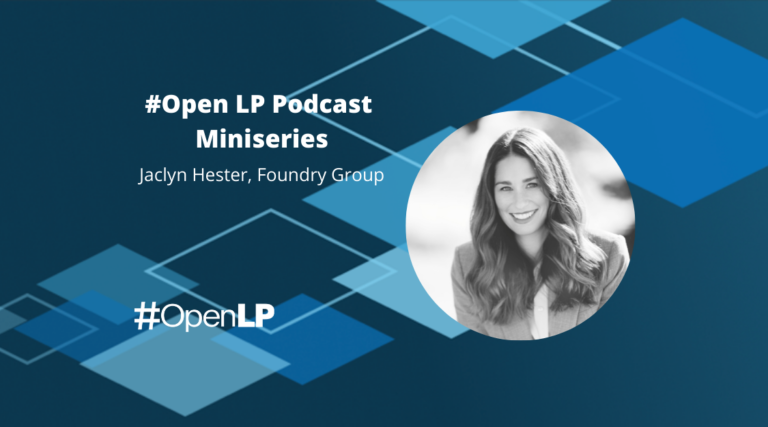I recently met with a new fund being formed by a group of talented operators. After an hour discussing their strategy, the team mentioned that I had asked insightful questions that they previously hadn’t been asked, particularly around the team and fund construction, which they found helpful as they made final decisions about their fund.
This interaction (while flattering) was not actually a statement about me, but rather a reflection that I happened to be part of their first meeting with an institutional investor. Their comments got me thinking about what makes a truly good limited partner (LP), a topic we take seriously at Sapphire Partners, the investment platform within Sapphire Ventures that invests in global early-stage venture funds as LPs. Venture funds typically have a choice when putting together their syndicate, and this choice can have a large impact on the firm and its future. I thought I’d share Sapphire’s philosophy on what it means to be a good LP for venture funds.
1. Be a long-term partner
A long-term view is essential to being a good LP. There are two primary parts to having a long-term view:
- The LP mentality: In our experience, venture funds typically have a 10 year life, although the majority can take much longer than 12 years to liquidate. When an LP makes a commitment, they should invest with the intention of partnering for numerous funds, potentially during various cycles (ps. venture is cyclical!) That doesn’t mean that LPs shouldn’t do their full work for every re-up (they should), but the default should be to reinvest unless there is underperformance or a major change in what a GP is doing.
- Availability of capital: To fulfill an LP’s part of the bargain, they should appropriately manage their own capital so they have the capability to make subsequent commitments to GPs. GPs should have confidence that LPs will be with them for more than a few years assuming GPs do their part and perform well.
2. Provide value beyond capital
LPs should provide value past capital, though what each GP considers valuable can be different. I can’t speak for all LPs of course so I will instead speak from our own experience. Some of the ways we deliver value to the GPs we partner with include:
- Ask questions: Limited partners should be cheerleaders but also ask thought-provoking questions. LPs are uniquely positioned because of what they know – the team, the strategy, the portfolio AND what other GPs are doing or have done in regards to both investing and firm management. LPs can and should use this knowledge to ask informed questions. Why? Because ultimately, we invest in GPs because we believe in them and trust their decisions. But if we can get GPs thinking, even if it’s just to reaffirm their decisions, it helps everyone: GPs, LPs and often the underlying portfolio companies.(For more about the value of GPs asking good questions, check out my colleague Beezer Clarkson’s post.)
- Market insights / analytics: LPs can leverage the knowledge, insights and data they gather across their portfolio to provide benchmarking and discuss valuations or investment trends beyond what a single GP is seeing. Sometimes LPs can provide knowledge specific to a sector. For example, the new Sapphire Sport investment vehicle has deliberately assembled an LP syndicate of key players in the sporting world such as City Football Group and adidas, who can weigh in on trends or markets.
- Fund management: LPs can also help with fund formation or fund management questions. A typical LP sees a lot of models of what works and what doesn’t and can help answer questions around topics like reserves and recycling.
- Introductions: LPs can help with intros, whether it’s to other LPs, GPs, customers or even key talent. At Sapphire, we tend to make three types of introductions for our GPs and their portfolio:
- Other investors – we make intros to other investors including other LPs and follow-on investors, such as GPs in our ecosystem or our ventures team, which is a natural fit for most of our early portfolio as they start investing later, typically in the Series C round.
- Business development – through our Portfolio Growth team we have made hundreds of introductions over the years to new customers and partners. For example, our business development team hosts about 40 executive innovation days annually for Global 2000 companies. All of the innovation days in 2018 included a company or GP in the Sapphire Partners portfolio.
- Talent – we try to help add talent in several ways. Our firm has an internal head of talent, who can help our GPs develop a pipeline of candidates for their portfolio. We also engage with a large ecosystem of GPs and entrepreneurs, and we can refer experienced talent whether it’s to join a portfolio company or GP.
3. Contribute to the broader ecosystem
One element that I think gets overlooked is the notion of contributing to the venture ecosystem. We work in a pretty amazing, constantly evolving ecosystem, and while I feel very lucky to be part of it, I think we have a responsibility to make it better.
There are tons of ways to contribute beyond giving capital, from advising newly forming funds, to speaking, to making connections. For example, I hosted a dinner last fall with Hana Yang connecting LPs and emerging female GPs; a topic that Beezer and I both plan to spend more time on this year amongst other areas.
This is some of the philosophy we have at Sapphire Partners, and I’m sure there are other perspectives or guidelines for LPs that I’ve missed. Help add to the conversation so that we can collectively make this ecosystem stronger and more valuable and please check out additional LP views at OpenLP.com or by using the #openLP hashtag on Twitter.




